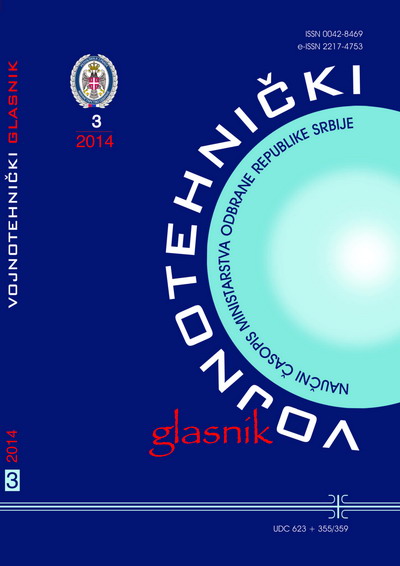Effect of helium plasma gas flow rate on the properties of WC-12 wt.%Co coatings sprayed by atmospheric plasma
Abstract
The cermet coatings of WC-12wt.%Co are extensively used to improve the wear resistance of a wide range of technical components. This paper analyses the influence of the plasma gas flow of helium on the microstructure and mechanical properties of WC-12wt.%Co coatings deposited by plasma spraying at atmospheric pressure (APS). In order to obtain homogeneous and denser coatings, three different flows of He ( 8 l/min., 16 l/min. and 32 l/min) were used in the research. With the application of He, coatings achieved higher values of hardness due to less degradation of the primary WC carbides. The main goal was to deposit dense and homogeneous layers of WC-12wt.%Co coatings with improved wear resistance for different applications. The test results of the microstructure of the layers were evaluated under a light microscope. The analysis of the microstructure and the mechanical properties of the deposited layers was made in accordance with the standard of Pratt-Whitney. The morphology of the powder particles and the microstructure of the best coating was examined on the SEM (scanning electron microscope). The evaluation of the mechanical properties of the layers was done by applying the HV0.3 method for microhardness testing and by applying tensile testing to test the bond strength. The research has shown that the flow of He plasma gas significantly affects the microstructure, the mechanical properties and the structure of WC-12 wt.%Co coatings.
Proposed Creative Commons Copyright Notices
Proposed Policy for Military Technical Courier (Journals That Offer Open Access)
Authors who publish with this journal agree to the following terms:
Authors retain copyright and grant the journal right of first publication with the work simultaneously licensed under a Creative Commons Attribution License that allows others to share the work with an acknowledgement of the work's authorship and initial publication in this journal.
- Authors are able to enter into separate, additional contractual arrangements for the non-exclusive distribution of the journal's published version of the work (e.g., post it to an institutional repository or publish it in a book), with an acknowledgement of its initial publication in this journal.
- Authors are permitted and encouraged to post their work online (e.g., in institutional repositories or on their website) prior to and during the submission process, as it can lead to productive exchanges, as well as earlier and greater citation of published work (See The Effect of Open Access).

